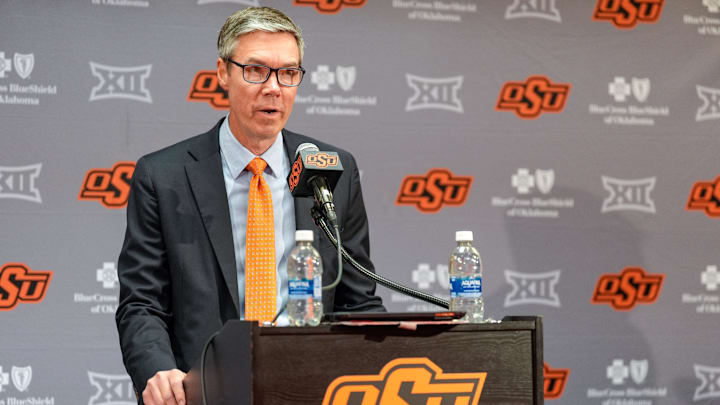Following the sudden firing of longtime head coach Mike Gundy, Oklahoma State has named offensive coordinator Doug Meacham as its interim head coach. The move reflects a desire for stability during a turbulent time, as Meacham brings familiarity with the program, experience in offensive leadership, and a deep connection to Oklahoma State football. While he has never been a head coach before, Meacham is a seasoned assistant who understands both the expectations and the culture in Stillwater.
A Return to His Roots in Stillwater
Doug Meacham is no stranger to Oklahoma State. He played for the Cowboys as an offensive lineman from 1983 to 1987, and later returned to serve on the coaching staff during multiple stints, including from 2005 to 2012. His decades-long association with the program, both as a player and as a coach, made him a natural candidate to take over in the wake of Gundy’s departure. This familiarity with the school, its football culture, and the surrounding community is critical during a transition, especially in the middle of the season.
Rather than bringing in an outsider unfamiliar with the roster or system, Oklahoma State chose someone who knows the locker room and the playbook. Meacham won’t need time to learn who his players are, how the program operates, or what the Cowboys stand for. That continuity should help the team stay focused and grounded as it navigates the uncertainty ahead.
Coaching Career and Offensive Acumen
While Meacham has never held a head coaching role, his resume is filled with high-level experience as an offensive assistant. In 2013, he was hired by TCU to be the Horned Frogs’ offensive coordinator, and in his first season in 2014, he was a finalist for the Broyles Award, given to the nation’s top assistant coach. That year, TCU’s offense saw a dramatic rise in production, and Meacham’s play-calling drew national praise.
His coaching career spans several programs and levels, including stops at Houston, Kansas, Samford, Henderson State, and even in the XFL with the St. Louis BattleHawks. Across these roles, Meacham has consistently worked on the offensive side of the ball, often helping to produce high-powered units that can stretch the field and create mismatches. He’s developed quarterbacks, receivers, and tight ends, and has called plays in some of the most competitive environments in college football.
Despite his lack of head coaching experience, Meacham’s decades in the game give him a deep well of knowledge to draw from. His challenge now will be to expand his role from offensive architect to program leader, overseeing all phases of the team and navigating the broader responsibilities that come with being the face of the program.
Why Meacham Was the Right Interim Choice
Oklahoma State’s decision to promote Meacham as interim head coach was not just about convenience, it has a little strategy to it so they protect the team’s cohesion midseason. Hiring someone from outside the program would have introduced a learning curve at a time when the Cowboys can’t afford to lose momentum. Meacham already has working relationships with the players and staff, understands the current systems in place, and offers a steady voice in the midst of change.
The move also sends a message to the locker room that the administration values internal leadership and is committed to giving the current roster and staff a fair shot at finishing strong. By keeping things in-house, Oklahoma State reduces the risk of disruption that can come with a new coaching philosophy, terminology, or leadership style.
Although there is no indication yet whether Meacham will be considered for the permanent job, this stretch serves as a proving ground. If he can manage the transition well, keep the team competitive, and maintain recruiting relationships, he could emerge as a viable candidate.
Challenges and Outlook
Meacham steps into the role at a crucial moment. Beyond managing games, he’ll now have to oversee recruiting efforts, maintain morale, and make sure the team stays competitive week to week. These added responsibilities will test his adaptability and leadership, especially as he balances his offensive duties with a wider program focus.
Whether Meacham becomes a long-term solution or simply holds the fort until a permanent hire is made, his presence offers Oklahoma State a sense of familiarity in a time of upheaval. His leadership in the coming weeks will determine just how smooth this transition will be.
For now, Doug Meacham is in charge — a Cowboy through and through, now tasked with guiding the program he once played for through one of its most uncertain chapters.
